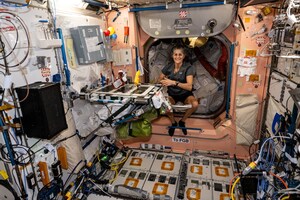HOUSTON, Dec. 6, 2021 /PRNewswire/ -- Media are invited to attend the dedication of Rocket Park at NASA's Johnson Space Center in Houston for former director George W.S. Abbey in a ceremony at 10 a.m. CST Friday, Dec. 10.
Home to one of only three Saturn V rockets on display in the world, the facility will now be known as George W.S. Abbey Rocket Park. The Apollo rocket housed inside a protective building there is the only one comprised of all flight-certified hardware capable entering orbit around the Moon. The 36-story Saturn V was restored over the course of two years, from 2005 to 2007, and has been on loan to Johnson from the Smithsonian's National Air and Space Museum collection since 1977. Outside, additional artifacts from the early human spaceflight program are on display.
Media must request credentials to attend by contacting the Johnson newsroom at 281-483-5111 or [email protected] no later than 5 p.m. Thursday, Dec. 9.
Abbey, one of the most influential NASA leaders through the end of the 20th Century, distinguished himself throughout a career spanning five decades. In 1964, he was assigned to the Apollo Program as an Air Force captain, and in 1967 became a NASA civil servant and technical assistant to Apollo Spacecraft Program Manager George M. Low. He participated in the Apollo 1 accident investigation and the development and implementation of spacecraft design changes that led to 13 successful Saturn V launches and six human Moon landings.
In 1970, Abbey and the Mission Operations Team earned the Presidential Medal of Freedom, the highest civilian honor in the United States, for their dedication and work to safely return the Apollo 13 crew home. Three years later, in recognition of his contributions to the Apollo Program, he received the NASA Distinguished Service Medal.
Abbey became director of Flight Operations at Johnson in 1976, where he led the operational planning and management of flight control and crew activities. In that role, he led the selection committee for the first group of space shuttle astronauts. More than 8,000 applied for the opportunity, and under Abbey's leadership the committee whittled the number of applicants to 35, known as the "Thirty-Five New Guys." For the first time, the new astronaut candidate class reflected the United States' diversity, with six women and four minority candidates. Abbey's guidance continued to prove invaluable during the early operational years of the Space Shuttle Program. From 1981-1986, the United States witnessed many firsts for the space program – the launch and safe return of the first reusable spacecraft, Space Shuttle Columbia, an American woman and an African American in space, and increasingly complicated satellite retrieval and repair missions.
Abbey moved to NASA Headquarters in 1988 to serve as the deputy associate administrator for space flight, and was later named both as the National Space Council's senior director for civil space policy and special assistant to the NASA administrator. He played an important part in negotiating a partnership between NASA and the Russian Space Agency that led to an agreement to work together on what would become the Shuttle-Mir Program, also known as Phase I of the International Space Station Program. Abbey was instrumental in restructuring the International Space Station after Space Station Freedom and his efforts led to a vibrant ISS Program which recently celebrated 20 continuous years of habitation.
After returning to Johnson in 1994 as deputy to the first female center director, Carolyn L. Huntoon, and Abbey became center director himself in January 1996. As director, he sought new ways to engage with the Houston community, and reached an agreement to open 53 acres of Johnson's pastureland adjacent to Rocket Park to the Clear Creek Independent School District and Houston Livestock Show and Rodeo for a "hands-on" agricultural education facility known as the Longhorn Project. The facility offers students the opportunity to learn more about longhorns and agriculture.
Abbey led Johnson until February 2001, and ended his NASA career in January 2003.
George W.S. Abbey Rocket Park allows dreamers and space flight enthusiasts to stand beside history and is a place of wonder for visitors from all over the world through Space Center Houston, Johnson's official visitor center.
Learn more about NASA's Johnson Space Center at:
Subscribe and get the latest NASA news with a weekly update in your inbox:
https://www.nasa.gov/subscribe
SOURCE NASA

Related Links
WANT YOUR COMPANY'S NEWS FEATURED ON PRNEWSWIRE.COM?
Newsrooms &
Influencers
Digital Media
Outlets
Journalists
Opted In






Share this article